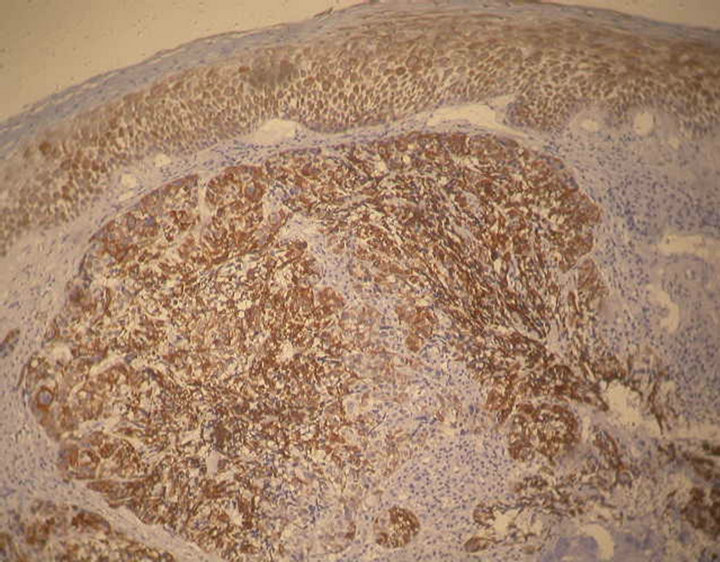
- Introduction
- Ck Ae1/3
Cytokeratins are intermediate filaments present in all epithelial cells, and also in a number of non-epithelial cells. In fact, cytokeratin positively has been reported in almost every tumour type, including uterine smooth muscle tumours, most soft tissue sarcomas, melanomas, gliomas, plasmacytomas and occasionally lymphomas.
Cytokeratins can be differentiated into light and heavy chain based on their molecular weight as well as acidic which are cytokeratins 9-20 or basic which are cytokeratins 1-8.
Diagnostic utility
CK Ae1/3 is a keratin protein found in humans. This is very useful in distinguishing between eptihelial origins of tumours from non epithelial This is also useful in classifying epithelial tumours as well. This produces a cytoplasmic staining pattern and several different control tissues can be used including breast, colon, skin and prostate tissue. This is very useful as the pan cytokeratins react with both type 1 acidic and type 2 basic cytokeratins and this makes it very useful in epithelial tissue.
CK AE1/3 contains the cytokeratins 1-8, 10, 14-16 and 19. This is the vast majority but because a few are missing, combining this with CK5.2 or CKHMW can be useful to get a more complete picture of a epithelial tumour.
Picture 1 – CK AE1/3 positivity in spindle cell carcinoma

Ck AE1/3 has several different applications. Below are a few examples.
Tumour |
CK AE1/3 + or - |
Epitheliod sarcoma |
Positive |
Synovial sarcoma |
Positive |
Desmoplasmic Small Round cell carinoma |
Positive |
Neuroblastoma |
Variable positive in about 85% of cases, but has specificity issues |
Rhabdomyosarcoma |
Negative |